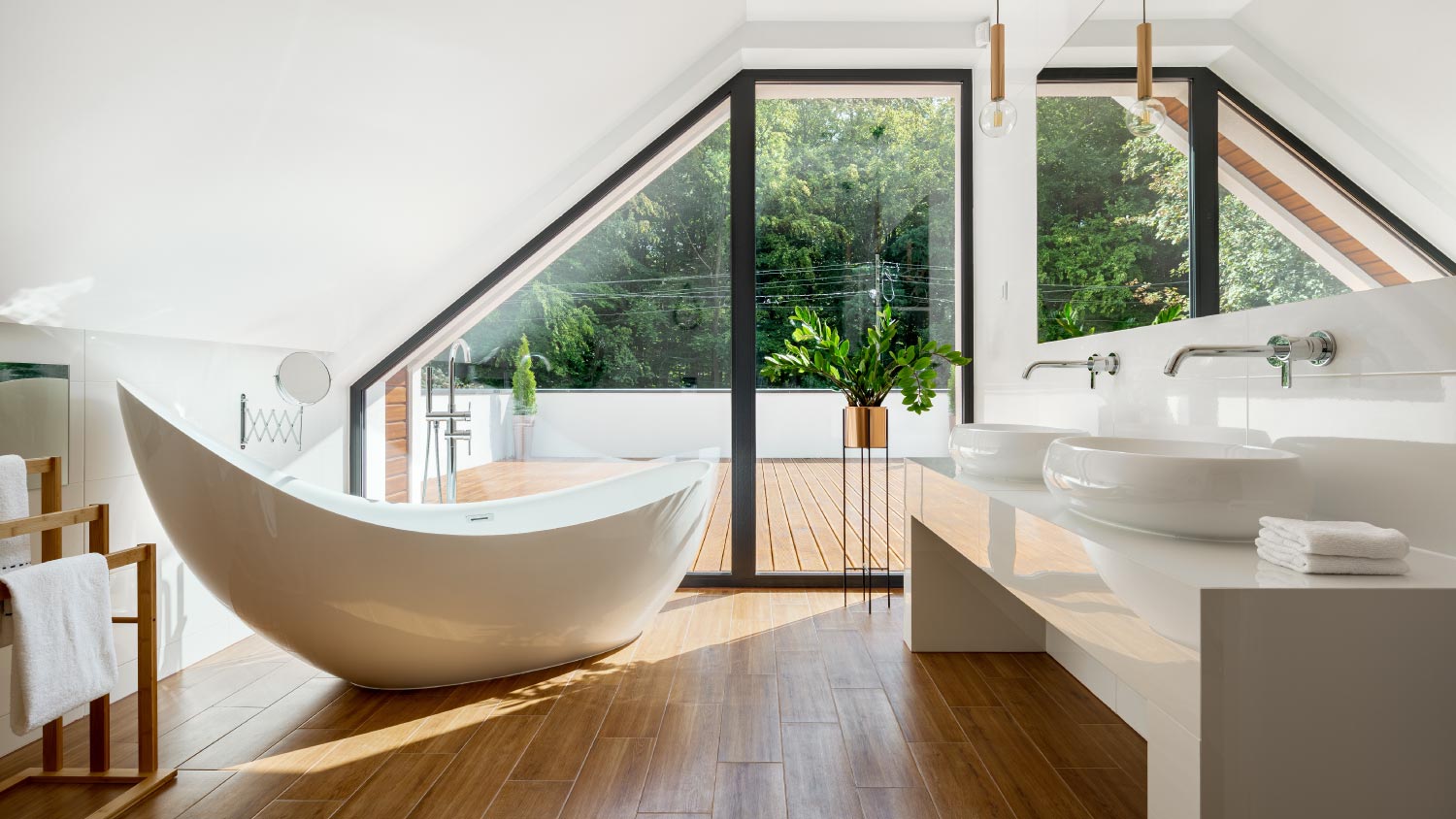
The cost of installing a bathtub or a shower liner depends on the type of tub or shower, size, and features. This guide will show what you can expect to pay for your project.


To calculate stair steps, you’ll need to know your total riser and riser height.
Total rise is the distance from the bottom of the floor to the top.
Most guides recommend a riser height of 7 to 7.75 inches.
A general contractor or carpenter can build and install your staircase.
Building or remodeling stairs can feel tricky, but figuring out exactly how many steps you need doesn’t have to be. By understanding a few simple measurements—like the total height between floors and the ideal height of each step—you can plan a staircase that’s perfect for your space, and perfectly safe, too. Our formula will help you learn how to calculate stairs steps to take out the guesswork for you.
The number of steps in a staircase depends on the total height from one step to the next, with each step typically rising between 7 and 7.75 inches. Use the table below to estimate how many steps you'll need based on common floor heights.
| Floor Height (Feet) | Floor Height (Inches) | Number of Steps |
|---|---|---|
| 8 | 96 | 13–14 |
| 10 | 120 | 16–17 |
| 12 | 144 | 18–20 |
| 14 | 168 | 21–24 |
| 16 | 192 | 24–27 |
Figuring out how many steps your staircase needs is easier than you might think. Once you know how tall the staircase needs to be (aka total rise), you just divide that height by how tall each step will be (aka riser height). A little math now can save a lot of hassle later—and helps make sure your stairs are up to code.
Number of Steps (risers) = Total Rise ÷ Riser Height

You can’t calculate the number of steps you need for a staircase without the total rise and riser height. Getting these measurements right is essential for building safe, comfortable, and code-compliant stairs.
Typically given in inches for calculations, total rise measures the vertical distance from the lower floor to the upper floor. You can calculate it with the following formula:
Total Rise = Finished Floor Height (Upper Floor) – Finished Floor Height (Lower Floor)
For an unbuilt staircase, riser height won’t be a concrete measurement but instead a personal preference for how tall you want each step to be. Most guides recommend a riser height between 7 and 7.75 inches, so you may want to look at portfolios of different heights to figure out what works best for your space.
Even the most experienced and skilled DIYers are unable to construct and install a staircase, which is where your local general contractor or a carpenter near you comes in. A general contractor is best for larger remodels, while a carpenter is better for smaller, more custom projects. Whichever route you choose, make sure whoever you hire is licensed and insured and has a portfolio of their work to show you.
From average costs to expert advice, get all the answers you need to get your job done.

The cost of installing a bathtub or a shower liner depends on the type of tub or shower, size, and features. This guide will show what you can expect to pay for your project.

Whether you're dreaming up a new office or a peaceful sunroom, home addition costs will shape your design. Learn what to expect for every vision.

Building an addition can increase your home's value and provide more space to live, but it does come at a cost. Read on to learn how much it costs to build a room addition based on factors like location, type, and size.

An updated bathtub can give a bathroom a whole new look. Find out how much it costs to replace a bathtub in Orlando, FL, including prices by type and labor costs.

When planning a bathroom remodel for older adults, start by evaluating the mobility needs of the specific individuals residing in the home.

Discover the average walk-in bathtub installation cost, key price factors, and ways to save. Get expert tips to plan your walk-in tub project with confidence.